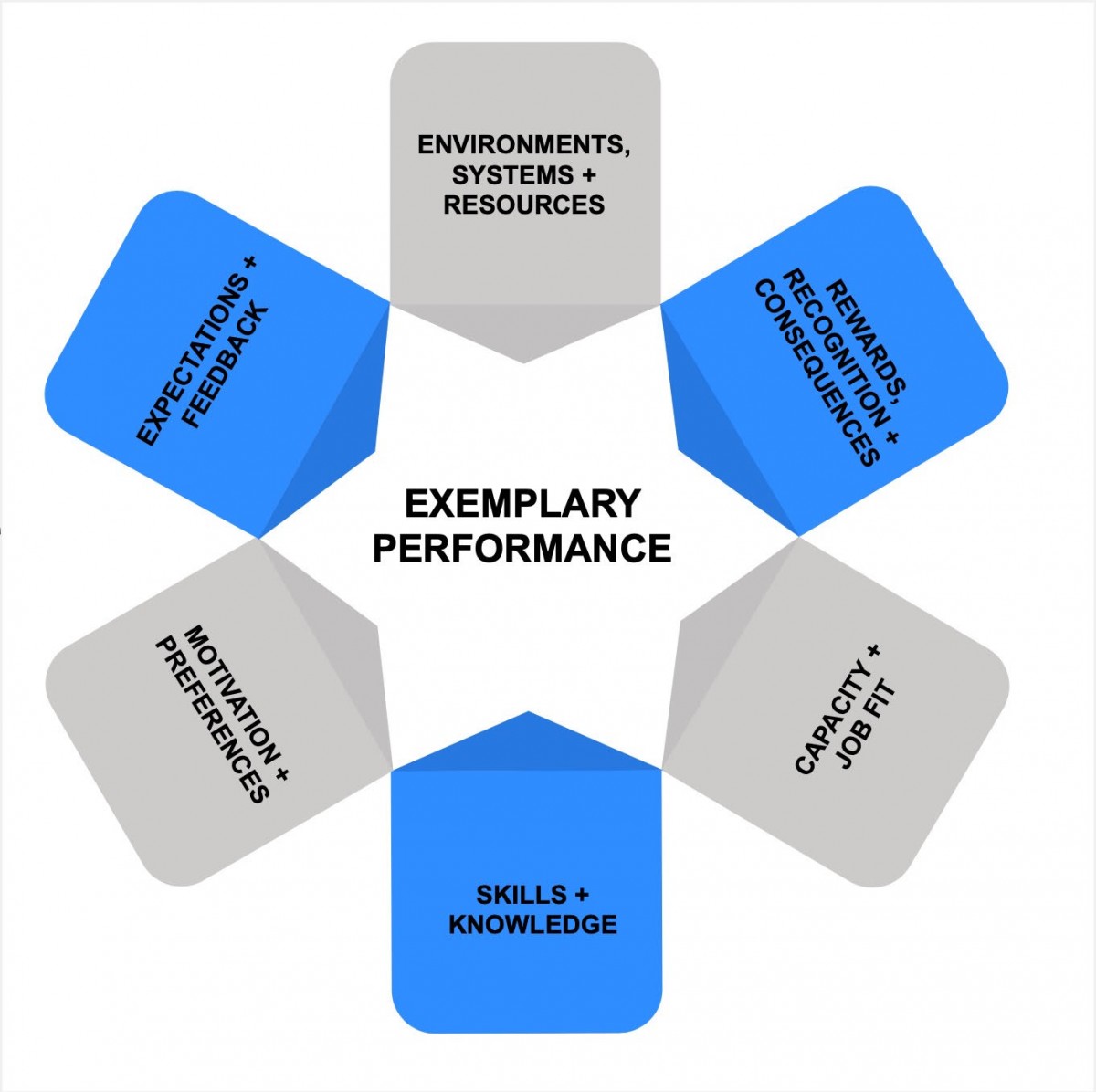Share:
Andrew Freedman, Contributor

The following is adapted from Thrive.
The ability to provide good feedback to employees is one of the most important skills a leader can possess. Providing regular, constructive feedback to your team members creates a positive difference in employee performance and improves engagement.
While feedback is one of the primary drivers of personal and professional development for employees, many leaders fail to provide the kind of regular feedback that employees need to succeed.
There are a variety of reasons this could be the case, but often leaders fail to provide useful feedback because they aren’t aware of how vital feedback is to their teams or how to provide that vital feedback in a way that is constructive and effective.
To give an employee constructive feedback, start by setting clear expectations for your team members, align the feedback you give with those expectations, and create and maintain a consistent framework for feedback that will inspire growth by instilling a continuous improvement mindset and fostering a work environment in which all employees can thrive.
In this article, I will examine the important role feedback plays in strengthening teams and inspiring growth, and I will offer some tips that will help you improve your approach to providing feedback.
Why Constructive Feedback Is So Important
As a leader, you may have previously heard these statements:
- “I didn’t know you needed that from me.”
- “Why didn’t you tell me that earlier?”
- “That’s not my job.”
- “I’ve never had a performance review.”
- “I don’t have 1:1s with my manager.”
If you’re like me, these sentiments likely make your skin crawl. However, unfortunate as it is, they are often the norm rather than the exception.
Effective feedback accelerates learning, increases ownership and accountability for progress, and fosters lasting change that will echo and reverberate throughout your company to create desired results.
Feedback is a crucial part of developing a winning culture, and without highly intentional and effective feedback structures in place, even the most promising companies can begin to see a direct and negative impact on engagement, performance, and retention.
In fact, you can trace many performance barriers directly to the organizational influence of setting clear expectations and providing effective feedback. In studying over 600 organizations, we see that at least 60% of employees and managers agree that 1:1s and performance reviews do not effectively support employees in performing their roles successfully or growing their careers. Ouch.
Here are a few tried-and-true tips to make sure you’re giving constructive feedback to your employees.

1. Start by Setting Clear Expectations.
Sir Ernest Shackleton, an Antarctic explorer who also famously tried to sail to the South Pole, provides a great example of setting clear expectations. For his expeditions, he used this language to recruit crew members and consistently had droves of applicants for his journeys.
“MEN WANTED: for hazardous journey, small wages, bitter cold, long months of complete darkness, constant danger, safe return doubtful, honor and recognition in case of success.”
Now, I wasn’t on the ship, but I can assume that everyone who signed up knew exactly what to expect. Everyone who joined his expedition had a shared understanding of the goals and conditions.
A clear goal is the number one indicator of a good expectation-setting structure.
Employees need to know the details of their role: what they are expected to accomplish, measures of success, best approaches to producing the desired results, how their performance will be assessed, and, especially, how their role adds value to the overall enterprise.
When your employees have clarity on what’s expected of them, effective feedback, which is a crucial element in the performance chain, comes naturally. Otherwise, it comes across as meaningless and/or inconsistent criticism.
2. Align Your Feedback with Those Expectations.
When you hear the phrase “I’m going to give you some feedback,” how do you feel? What are you expecting to follow that statement?
If you are like almost every person I’ve met, not only are you likely bracing yourself for negative commentary about an area where you have a performance deficiency, but you are also expecting that the input will not provide value or utility.
That’s because much of the feedback distributed in modern workplaces does not effectively link to the expectations set for the worker, as mentioned previously. Good feedback must be relevant to the employee’s role.
Too often, ill-equipped managers and leaders do the best they can with what they have. They offer generalized input that is mostly focused on what is lacking, delivered in a fashion that often leaves direct reports uninspired, confused, and no more effective in their work than they were before the conversation with their boss.
3. Create a Framework for Feedback.
Consistency is key when it comes to feedback. It’s important that your employees know what a culture of feedback looks like and feels like in the context of your organization.
To start with, all performance feedback should be delivered in real-time, or as near to that as possible. The more immediate, the better. Here are a few additional elements of highly effective feedback:
Constructive: All feedback needs to be constructive. Framing it and delivering it any other way distracts from the point of feedback and can create fear, uncertainty, and doubt across the employee base.
Reinforcing: Make sure you provide clarity on what you value and want to see the employee do again, or, what does not align with culture or performance expectations, and what/how the employee needs to produce differently.
For example: “When I heard you empathize with the customer to let him know that we understood the gravity of his issue, I knew that you had properly internalized and applied our value of Empathy. Keep it up!”
Essential: Feedback should tie directly to specific, role-based performance expectations and company values. Period. Anything more or less than this can become distracting.
Developmental: You want to deliver feedback in a way that helps your team members get better. You can do this in several ways, including asking questions like, “What, specifically, worked in that interaction for you? What is one thing you are going to keep doing? What is one thing you will improve next time?”
Good Feedback Structures Help Your Business Thrive
Setting clear expectations and aligning feedback to those expectations will help your employees understand how to be most effective in their work. Not only will this increase engagement and elevate performance, but also it helps to attract top talent to the organization and reduces the risk of unwanted attrition.

Andrew Freedman is the managing partner of SHIFT Consulting, co-author of Thrive, and an affiliate faculty member of the University of Baltimore. He is a lifelong advocate for maximizing human potential and creating positive change by implementing people-focused business strategies.


